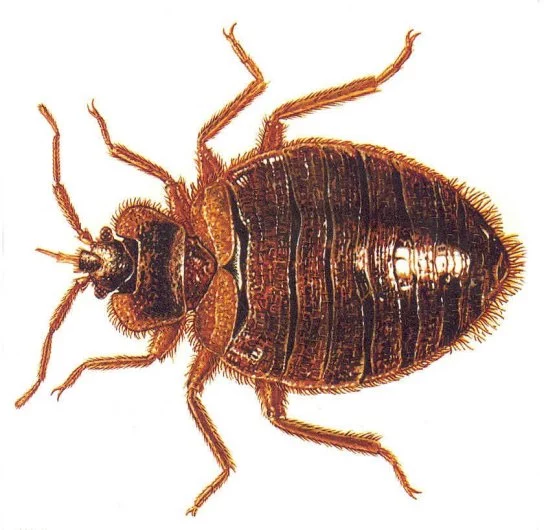Bedbugs, the tiny insects that cause trouble for many households, are not only known for their rapid reproduction but also for their ability to survive through many generations due to inbreeding. This may seem strange because, typically, inbreeding results in serious genetic issues, reducing the survival chances of a species. However, bedbugs are an exception.
According to research by Coby Schal, a researcher at North Carolina State University (NCSU), bedbugs in buildings across the U.S. have very low genetic diversity. In fact, in some cases, an entire infestation in a building can originate from just one pregnant female bedbug. Inbreeding in these populations not only avoids genetic problems but also helps them maintain strong reproductive capabilities and thrive through multiple generations. Schal estimates that some bedbug populations may have undergone as many as 70 generations of inbreeding.

What’s even more remarkable is that these populations not only survive but thrive, making bedbugs a challenging pest to eradicate, despite the fact that they may seem easy to treat in theory. In reality, pest control measures are not always effective. The inability to exploit inbreeding as a weakness to eliminate them has led many researchers to seek alternative control methods.
Meanwhile, some studies from the Journal of Economic Entomology (2010) suggest that bedbugs can develop resistance to chemicals through genetic traits gained via inbreeding. This not only increases their resilience but also makes the application of pesticides less effective.
Scientists, including Dr. Schal, have observed that insects like bedbugs and cockroaches are different from other species. They can continue to exist in harsh environments without being affected by inbreeding. Furthermore, these species have evolved to thrive in environments with nearly unchanged living conditions for many years, making them a major challenge for pest control.
One factor helping bedbugs continue to thrive and reproduce is their resistance to traditional control methods. Experts suggest that, instead of relying solely on insecticides, measures like regular cleaning and preventing their spread through personal belongings or bedding could help reduce the risk of infestation.
“The ability of bedbugs to develop through inbreeding could open new avenues in research for natural pesticides and chemical-free pest control methods.”
This could expand the scope of research and application of more effective bedbug control methods in the future, thus reducing our dependence on chemicals and protecting human and animal health.
In summary, bedbugs are not just intelligent and resilient insects but also formidable opponents in the battle against pests. Understanding their reproductive mechanisms and adaptability will help us find more effective control methods in the future.


HPX24h > Animals > Why Bedbugs Thrive Through Inbreeding
Top Reads from This Category
Animals
Secrets to Surviving Antarctic Freezing Cold Through RNA Editing
Animals
The Secret Behind Turtle Eggs Hatching at the Same Time: A Fascinating Reason
Animals
The Way African Ants Use Venom to Paralyze Prey from a Distance
Animals
The Potential of Black Mamba Venom in Developing New Painkillers
Animals
Male Spiders Sacrifice Themselves to Protect Future Generations
Animals
Decoding Whale Songs: When the Community Joins to Uncover the Ocean’s Mysteries
Animals
Gibbons Develop Vocal Techniques as Powerful as Humans: New Discoveries About Their Unique Sounds
Discover New Topics
Fitness
Ketosis: The Key to Accelerating Effective Fat Burning
Fitness
Swimming: The Golden Key to Physical and Mental Well-Being
Fitness
Why Do You Get Headaches After Exercise? Causes, Remedies, and Effective Prevention
Healthy Eating
How Many Calories Do You Need Each Day to Maintain Optimal Health?
Science
Artificial Hearts and a Future Without the Need for Transplants
Health
E. Coli In The Gut May Trigger A ‘Chain Reaction’ Leading To Parkinson’s Disease
Science
Mind-Controlled Prosthetics: A Groundbreaking Advancement in Medicine
Animals
The Care of Offspring: The Reproductive Secrets of Guppies
Healthy Eating
Gallbladder Protection Through Diet: Expert Guide and Practical Tips
Science
New Artificial Kidney via Nanotechnology: A Revolutionary Alternative to Dialysis
Health
What Does a Right-Side Headache Indicate About Your Health?
Fitness
Exercise Tips for Pregnancy: Safe, Effective, and Beneficial for Mom and Baby
Animals
Can Hyena Dogs Be as Smart as Primates?